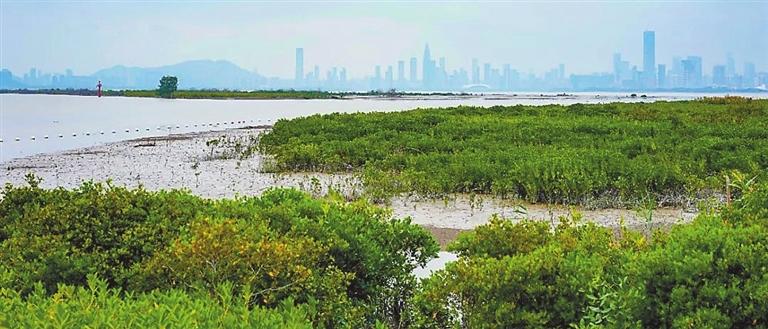

Lin Lin linlin_szdaily@126.com THE Chinese Government’s work report this year states that China will continue to facilitate ecological advancement, maintain the balance between development and environmental protection, and boost sustainable development. The report also points out that this year, the country will continue to roll out major engineering projects to protect and restore ecosystems. Matteo Convertino from Italy, an associate professor at the Institute of Environment & Ecology of Tsinghua Shenzhen International Graduate School, believes that nature should be rebuilt as a new infrastructure by taking hydroclimatic risks into consideration. Convertino is currently serving as the principal investigator (PI) of the school’s Future Ecosystem Lab (TREES) that is focused on ecosystem risk assessment, sensing and forecasting, management and engineering. “Restoration is not just an ecological problem, but also a social problem,” Convertino said during an interview with Shenzhen Daily. “In addition to bringing back ecosystems as they were, we should also consider the needs of present and future generations within a nature-based development.” Convertino cites the expansion of mangrove forests to cope with rising sea levels as an example. “Mangrove forests should be expanded, not only because they were larger in the past, but also because in the future, we may face more problems from rising sea levels and other unexpected risks that threaten our city,” he said. “Mangroves can absorb a huge amount of carbon dioxide. Carbon neutrality is not only about reducing emissions from industries and vehicles, but also about improving species’ capacity to ‘draw down’ carbon dioxide,” he added. “Rising sea levels are a climate issue and also a problem for local development. To address this challenge, we need to leverage the power of nature as a boundary, filter and flexible barrier for plants and other species,” he continued. Convertino’s experience in Shenzhen has exposed him to a range of city projects that are aligned toward protecting nature, improving the urban environment and providing leisure spaces for local residents. “One such project is the restored mangrove community in Dongchong, at the back bay by the beach,” he said. “It restores water flow, and also creates a new area with new houses for people to enjoy their vacations.” Shenzhen Talent Park is another good example of how nature and people can coexist. “The park is a nice space for families to enjoy their time together, and is also an important habitat for flood protection,” the professor said. | 
